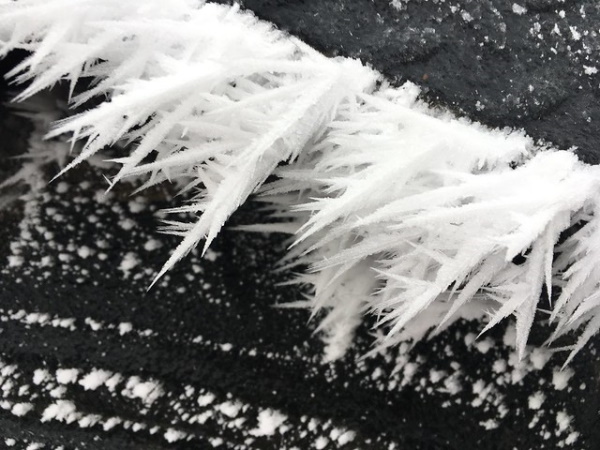Ice ice baby! Though “Vanilla” isn’t a natural form (or flavor) of ice, many other kinds of slippery frozen water are way cooler and much less annoying.
Pancake Ice
Usually found in the open sea where rough conditions prohibit the orderly formation of ice sheets, Pancake Ice is one of the most visually arresting forms of ice. The individual “pancakes” can range in size from one foot (30 cm) to 10 feet (3 m) in diameter with an average thickness of about 4 inches (10 cm).
As the icy discs bump and jostle together with the action of waves and swells, their rims become raised with accumulated slush and broken ice crystals. As conditions become colder and calmer, the icy pancakes spread to cover the sea’s surface and freeze together, losing their disc shapes and congealing into homogeneous layers.
Candle Ice
Candle Ice gets its name from the appearance of the tall, thin crystals that separate out of ice sheets when the spring melt is in its early stages. The separations occur along the boundaries of individual large ice crystals, revealing a multitude of “candles” which often collapse into piles along the edges of ice sheets.
Typically found around freshwater rivers and streams, Candle Ice is known for the gentle “clinking” sound it produces as the disengaged crystalline ice columns bump against one another. In some arctic communities, it’s customary to add some Candle Ice to one’s beverage of choice as a way of celebrating the end of winter and the onset of warmer weather.
Feather Ice
Feather Ice is more common then we believe due to the fact that observing it requires weather conditions that are uncomfortable to say the least. This exquisitely beautiful example of Feather Ice comes courtesy of photographer Andrew, who chanced to espy it on a windswept plateau in northwestern Wales, UK.
Feather Ice forms on tree branches and bushes in areas where night-time temperature drop below −22°F (−30°C). Add in strong, steady wind and a modicum of humidity and the conditions are right for the formation of Feather Ice. In addition, it can also form in clumps and patches on the the surface of a frozen lake or other watercourse, as can be seen in the image just above. These delicate ice formations are much like snowflakes in that the precise weather conditions that directed their formation are never exactly the same.
